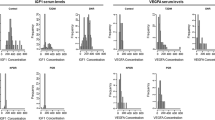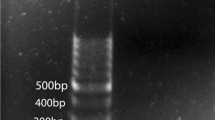Abstract
Objectives
This study investigated the role of glutathione-S-transferase gene (GSTM1 and GSTT1) polymorphisms in the predisposition of type 2 diabetes mellitus (T2DM) with or without diabetic retinopathy (DR).
Methods
The case-control study included 188 subjects: 50 T2DM with DR, 63 T2DM without DR, and 75 healthy individuals’ presenting no clinical signs or evidence of diabetes mellitus. Zinc and magnesium levels were measured using a flame atomic absorption spectrophotometer, and the lipid profile was evaluated using standard methods. The gene polymorphism of GSTs was performed by the multiplex-PCR method.
Results
Compared to the control, DR and T2DM had considerably greater total cholesterol, LDL-C, and decreased HDL-C levels. Magnesium levels were significantly lower in DR and T2DM than in control. Total cholesterol, LDL, TG, and magnesium levels didn’t differ significantly between DR and T2DM groups. In DR, the GSTT1-null genotype was more prevalent than in T2DM subjects and controls (26.0%, 12.7%, and 10.7%, respectively). GSTT1-null genotype was considerably more common in DR than in controls and associated with 2.94-folds enhancing the chance of developing DR (OR = 2.94; 95% CI = 1.12–7.75; p = 0.02). However, the recurrence of GSTM1-null genotype was not clearly distinguishable among these three populations (28.0%, 38.1% and 29.3%, respectively) and not particularly prone to the risk of DR compared to T2DM subjects and controls (OR = 0.63; 95% CI = 0.28–1.41; p = 0.26; OR = 0.94; 95% CI = 0.42–2.07; p = 0.87, respectively).
Conclusions
Taken together, these findings suggest the potential role of GSTT1 deletion mutation as a risk factor for the vulnerability of DR among T2DM patients in the Bangladeshi population.

Similar content being viewed by others
References
Ding J, Wong TY. Current epidemiology of diabetic retinopathy and diabetic macular edema. Curr Diab Rep. 2012;12:346–54. https://doi.org/10.1007/s11892-012-0283-6.
Wong TY, Cheung CMG, Larsen M, Sharma S, Simó R. Diabetic retinopathy. Nat Rev Dis Primers. 2016;2:16012. https://doi.org/10.1038/nrdp.2016.12.
Ahmed KR, Karim MN, Bhowmik B, Habib SH, Bukht MS, Ali L, Hussain A. Incidence of diabetic retinopathy in Bangladesh: a 15-year follow-up study. J Diabetes. 2012;4(4):386–91. https://doi.org/10.1111/j.1753-0407.2012.00208.x.
Ramasamy K, Raman R, Tandon M. Current state of care for diabetic retinopathy in India. Curr Diab Rep. 2013;13(4):460–8. https://doi.org/10.1007/s11892-013-0388-6.
Petrovič D. Candidate genes for proliferative diabetic retinopathy. Biomed Res Int. 2013;2013:540416. https://doi.org/10.1155/2013/540416.
Lim LS, Wong TY. Lipids and diabetic retinopathy. Expert Opin Biol Ther. 2012;12:93–105. https://doi.org/10.1517/14712598.2012.641531.
Matthews DR, Stratton IM, Aldington SJ, Holman RR, Kohner EM. Risks of progression of retinopathy and vision loss related to tight blood pressure control in type 2 diabetes mellitus: UKPDS 69. Arch Ophthalmol. 2004;122:1631–40. https://doi.org/10.1001/archopht.122.11.1631.
Chew EY, Ambrosius WT, Davis MD, Danis RP, Gangaputra S, Greven CM. Effects of medical therapies on retinopathy progression in type 2 diabetes. N Engl J Med. 2010;363(3):233–44. https://doi.org/10.1056/NEJMoa1001288.
Yang J, Fan X-H, Guan Y-Q, Li Y, Sun W, Yang X-Z. MMP-2 gene polymorphisms in type 2 diabetes mellitus diabetic retinopathy. Int J Ophthalmol. 2010;3(2):137–40. https://doi.org/10.3980/j.issn.2222-3959.2010.02.10.
Rodriguez-Fontal M, Kerrison JB, Alfaro DV, Jablon EP. Metabolic control and diabetic retinopathy. Curr Diabetes Rev. 2009;5(1):3–7. https://doi.org/10.2174/157339909787314176.
Durak R, Gülen Y, Kurudirek M, Kaçal M, Capoğlu I. Determination of trace element levels in human blood serum from patients with type II diabetes using WDXRF technique: a comparative study. J Xray Sci Technol. 2010;18(2):111–20. https://doi.org/10.3233/XST-2010-0247.
Cilenšek I, Mankoč S, Petrovič MG, Petrovič D. GSTT1 null genotype is a risk factor for diabetic retinopathy in Caucasians with type 2 diabetes, whereas, GSTM1 null genotype might confer protection against retinopathy. Dis Markers. 2012;32:93–9. https://doi.org/10.3233/DMA-2011-0863.
Dadbinpour A, Sheikhha MH, Darbouy M, Afkhami-Ardekani M. Investigating GSTT1 and GSTM1 null genotype as the risk factor of diabetes type 2 retinopathy. J Diabetes Metab Disord. 2013;12(1):48. https://doi.org/10.1186/2251-6581-12-48.
Sun L, Zhang Y, Xiong Y. GSTM1 and GSTT1 null genotype and diabetic retinopathy: a meta-analysis. Int J Clin Exp Med. 2015;8(2):1677–1683.
Moasser E, Azarpira N, Shirazi B, Saadat M, Geramizadeh B. Genetic polymorphisms of glutathione-s-transferase M1 and T1 genes with risk of diabetic retinopathy in Iranian population. Iran J Basic Med Sci. 2014;17(5):351–356.
Sharif S, Maqsood M, Naz S, Manzoor F, Jahan MS, Farasat T. Expression of Gstt1 in type 2 diabetic retinopathy patients. Crit Rev Eukaryot Gene Expr. 2019;29(1):47–50. https://doi.org/10.1615/CritRevEukaryotGeneExpr.2019025074.
Wong TY, Klein R, Islam FMA, Cotch MF, Folsom AR, Klein BEK. Diabetic retinopathy in a multi-ethnic cohort in the United States. Am J Ophthalmol. 2006;141(3):446–55. https://doi.org/10.1016/j.ajo.2005.08.063.
Zhang X, Saaddine JB, Chou C-F, Cotch MF, Cheng YJ, Geiss LS. Prevalence of diabetic retinopathy in the United States, 2005–2008. JAMA. 2010;304(6):649–56. https://doi.org/10.1001/jama.2010.1111.
Sivaprasad S, Gupta B, Crosby-Nwaobi R, Evans J. Prevalence of diabetic retinopathy in various ethnic groups: a worldwide perspective. SurvOphthalmol. 2012;57(4):347–70. https://doi.org/10.1016/j.survophthal.2012.01.004.
Looker HC, Nelson RG, Chew E, Klein R, Klein BE, Knowler WC. Genome-wide linkage analyses to identify Loci for diabetic retinopathy. Diabetes. 2007;56(4):1160–6. https://doi.org/10.2337/db06-1299.
Hietala K, Forsblom C, Summanen P, Groop PH; Finn Diane Study Group. Heritability of proliferative diabetic retinopathy. Diabetes. 2008;57(8):2176–2180https://doi.org/10.2337/db07-1495
Arar NH, Freedman BI, Adler SG, Iyengar SK, Chew EY, Davis MD. Heritability of the severity of diabetic retinopathy: the FIND-Eye study. Invest Ophthalmol Vis Sci. 2008;49(9):3839–45. https://doi.org/10.1167/iovs.07-1633.
American Diabetes Association (ADA); Standards of medical care in diabetes. Diabetes Care. 2014;37 (Suppl 1):S14–S80. https://doi.org/10.2337/dc14-S014.
World Medical Association. World Medical Association Declaration of Helsinki: ethical principles for medical research involving human subjects. JAMA. 2013;310:2191–4.
Hasan MM, Hosen MB, Rahman MM, Howlader MZH, Kabir Y. Association of ATP binding cassette transporter 1 (ABCA 1) gene polymorphism with type 2 diabetes mellitus (T2DM) in Bangladeshi population. Gene. 2019;688:151–4. https://doi.org/10.1016/j.gene.2018.12.003.
Yalin S, Hatungil R, Preek A. Glutathione S-transferase gene polymorphisms in Turkish patients with diabetes mellitus. Cell Biochem Funct. 2007;25:509–13. https://doi.org/10.1002/cbf.1339.
Landmesser U, Hornig B, Drexler H. Endothelial dysfunction in hypercholesterolemia: mechanisms, pathophysiological importance, and therapeutic interventions. Semin Thromb Hemost. 2000;26(5):529–37. https://doi.org/10.1055/s-2000-13209.
Cetin EN, Bulgu Y, Ozdemir S, Topsakal S, Akın F, Aybek H, Yıldırım C. Association of serum lipid levels with diabetic retinopathy. Int J Ophthalmol. 2013;6(3):346–349. https://doi.org/10.3980/j.issn.2222-3959.2013.03.17.
Hatwal A, Gujral AS, Bhatia RPS, Agrawal JK, Bajpai HS. Association of hypomagnesemia with diabetic retinopathy. Acta Ophthalmol. 1989;67:714–6. https://doi.org/10.1111/j.1755-3768.1989.tb04407.x.
McNair P, Christiansen C, Modibad S, Binder C. Hypomagnesemia, a risk factor in diabetic retinopathy. Diabetes. 1978;27:1075–7. https://doi.org/10.2337/diab.27.11.1075.
Miao X, Sun W, Miao L, Fu Y, Wang Y, Su G. Zinc and diabetic retinopathy. J Diab Res. 2013;2013:425854(8). https://doi.org/10.1155/2013/425854.
Doney AS, Lee S, Leese GP, Morris AD, Palmer CAN. Increased cardiovascular morbidity and mortality in type 2 diabetes is associated with the glutathione S transferase theta-null genotype: a Go-DARTS study. Circulation. 2005;111(22):2927–34. https://doi.org/10.1161/CIRCULATIONAHA.104.509224.
Tabrez MAJ, Jamil K, Joshi S, Devi MU. Association of genetic polymorphisms in GSTT1, GSTM1 genes in patients with diabetic retinopathy and nephropathy in south Indian population. World J Pharm Pharm Sci. 2016;5(9):1243–57. https://doi.org/10.20959/wjpps20169-7503.
Bid HK, Konwar R, Saxena M, Chaudhari P, Agrawal CG, Banerjee M. Association of glutathione S-transferase (GSTM1, T1 and P1) gene polymorphisms with type 2 diabetes mellitus in North Indian population. J Postgrad Med. 2010;56:176–81. https://doi.org/10.4103/0022-3859.68633.
Amer MA, Ghattas MH, Abo-Elmatty DM, Abou-El-ElaSH. Influence of glutathione S-transferase polymorphisms on type-2 diabetes mellitus risk. Genet Mol Res. 2011;10(4):3722–3730. https://doi.org/10.4238/2011.October.31.14.
Ramprasath T, Murugan PS, Prabakaran AD, Gomathi P, Rathinavel A, Selvam GS. Potential risk modifications of GSTT1, GSTM1 and GSTP1 (glutathione-S-transferases) variants and their association to CAD in patients with type-2 diabetes. Biochem Biophys Res Commun. 2011;407(1):49–53. https://doi.org/10.1016/j.bbrc.2011.02.097.
Kim YH, Yang JM, Jang JY, Ji Y-S. Association of the GSTM1 and GSTT1 genes with diabetic retinopathy in the Korean population. J Korean Ophthalmol Soc. 2017;58(3):313–20. https://doi.org/10.3341/jkos.2017.58.3.313.
Hovnik T, Dolzan V, Bratina NU, Podkrajsek KT, Battelino T. Genetic polymorphisms in genes encoding antioxidant enzymes are associated with diabetic retinopathy in type 1 diabetes. Diabetes Care. 2009;32(12):2258–62. https://doi.org/10.2337/dc09-0852.
Sivaprasad S, Gupta B, Gulliford MC, Dodhia H, Mohamed M, Nagi D, Evans JR. Ethnic variations in the prevalence of diabetic retinopathy in people with diabetes attending screening in the United Kingdom (DRIVE UK). PLoS One. 2012;7(3):e32182. https://doi.org/10.1371/journal.pone.0032182.
Acknowledgements
The authors thank all study subjects, physicians, and nurses for providing and collecting blood samples. Also, thanks Md. Mehedi Hasan and Md Bayejid Hosen of the Biochemistry and Molecular Biology Department of the University of Dhaka, and Dr. Shah Noor Hassan of the Department of Ophthalmology, Bangabandhu Sheikh Mujib Medical University.
Author information
Authors and Affiliations
Contributions
Tafriha E Tasdika implemented the study by designing, collecting and analysis the data as well written the draft manuscript. Md. Nuzhat Choudhury and Q. M. Iqbal Hossain helped in sample collection from hospitals, data interpretation and management. Yearul Kabir helps in implementation, results interpretation and reviewing the manuscript. The final manuscript read and approved by all authors.
Corresponding author
Ethics declarations
Ethical approval
All procedures performed in studies involving human participants were in accordance with the ethical standards of the institutional and/or national research committee and with the 1964 Helsinki declaration and its later amendments or comparable ethical standards.
Informed consent
Informed consent was obtained from all individual participants included in the study.
The authors have no relevant financial or non-financial interests to disclose.
Conflicts of interest
Authors declares that there has no conflict of interest.
Additional information
Publisher’s note
Springer Nature remains neutral with regard to jurisdictional claims in published maps and institutional affiliations.
Rights and permissions
Springer Nature or its licensor (e.g. a society or other partner) holds exclusive rights to this article under a publishing agreement with the author(s) or other rightsholder(s); author self-archiving of the accepted manuscript version of this article is solely governed by the terms of such publishing agreement and applicable law.
About this article
Cite this article
Tasdika, T.E., Choudhury, N., Hossain, Q.M.I. et al. Association of glutathione S-transferase M1 and T1 polymorphisms on the susceptibility of diabetic retinopathy in the Bangladeshi population. J Diabetes Metab Disord 22, 325–332 (2023). https://doi.org/10.1007/s40200-022-01142-9
Received:
Accepted:
Published:
Issue Date:
DOI: https://doi.org/10.1007/s40200-022-01142-9




